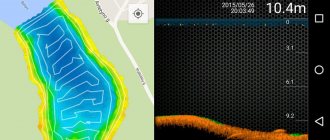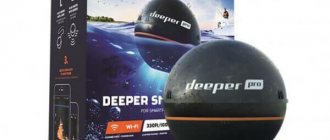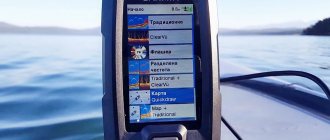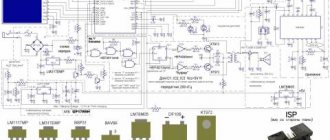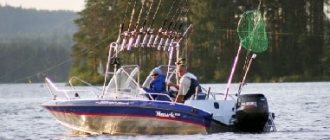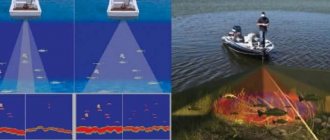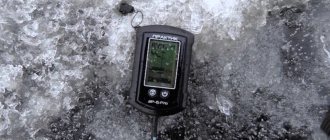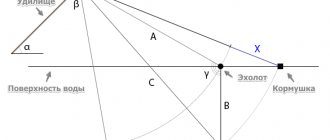Home page ✦ Echo sounders ✦ How an echo sounder works In the simplest words: an electrical impulse from the transmitter is converted into a sound wave in the sensor (transducer) and transmitted to the water. When a wave hits an object (fish, bottom, tree, etc.) it is reflected. The reflected wave again enters the converter, where it is transformed into an electrical signal, processed according to a given algorithm, and sent to the display. Since the speed of sound in water is constant (approximately 1440 meters per second), the time interval between sending the signal and receiving the echo can be measured and from this data the distance to the object can be determined. This process is repeated many times within a second. The most commonly used wave frequency is 200 kHz, and instruments at 83 kHz are also sometimes produced. Although these frequencies are in the range closer to audio frequencies, they are inaudible to both humans and fish. As mentioned earlier, the fish finder sends and receives signals, then “prints” the echo onto the display. Since this happens many times per second, a continuous line running across the display shows the bottom pattern. In addition, the screen displays the signal returned from any object in the water between the surface and the bottom. Knowing the speed of sound in water and the time it takes for the echo to return, the device can show the depth and location of any fish in the water.
⛵ Sonar capabilities
A good fish finder has four important characteristics:
1) Powerful transmitter.
2) Efficient converter (sensor).
3) Sensitive receiver.
4) High resolution display.
All parts of this system must be designed to work together in all weather conditions and critical temperatures. High transmitter power increases the likelihood that you will receive an echo in deep water or poor water conditions. It also allows you to see small details such as fry and fine bottom structure. The transducer must not only conduct a powerful signal from the transmitter, it must also convert the electrical signal into audio energy with the least loss in signal power. On the other hand, he should feel the smallest echo from the fry or a bottom signal from deep water. The receiver deals with an extremely wide range of signals. It must distinguish between the strongest transmitted signal and the weakest echo coming from the transducer. In addition, it must distinguish between objects that are close to each other, turning them into different pulses for the display. The display must have high resolution (vertical pixels) and good contrast to show the underwater world in detail and clearly. This allows you to see small fish and bottom details.
